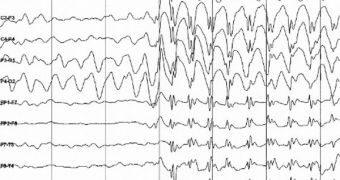Scientists are drawing attention to the fact that epilepsy, a condition that affects millions, is still not getting the attention it needs for specialists, research groups, universities and authorities. Considering the severity of the situation, this cannot go on, they argue in a new study.
Unfortunately, epilepsy is today a common and serious neurological disorder. It affects many people around the world, and yet funds for research into developing drugs and therapies against it are in very short supplies.
Public attention is also lacking, as are awareness campaigns. This state of affairs is detailed in an editorial on a study published in the January 4, 2011, print issue of the journal Neurology.
The publication is the medical journal of the American Academy of Neurology, (AAN), an association of more than 22,000 neurologists and neuroscience professionals, dedicated to promoting the highest quality patient-centered neurologic care.
“We have almost nonexistent epilepsy surveillance, or ongoing collection of data on newly diagnosed epilepsy, in the United States,” explains scientist Edwin Trevathan, MD, MPH.
He holds an appointment as the Dean of the St. Louis University School of Public Health, and is also a member of the Neurology Editorial Board.
“As a result, we do not have good data to inform decisions made by our health leaders, and some of our best researchers are analyzing data that are 30 to 50 years old,” he goes on to say.
One of the main reasons why inadequate epilepsy data permeate the medical community today can be found in the narrowly focused funding lines that Congress drew out for the US Centers for Disease Control and Prevention (CDC).
Rather than being focused on essential public health infrastructure, such as public health surveillance for epilepsy, these funds are directed for public awareness campaigns, which is overall a very ineffective strategy.
“Epilepsy has a major impact on public health. A national approach to monitoring epilepsy trends is desperately needed in order to monitor the impact of improvements in epilepsy care, to identify problems with epilepsy care that need to be corrected, and to provide up-to-date data for researchers,” Trevathan says.
The situation is made even worse by the fact that previous studies hinted that at least one in 26 people will develop the condition at some point in their lives. This means monumental costs for public healthcare systems, a lot more than would be required to fund the quest for a cure.
“Our results highlight the need for more research using epilepsy surveillance data, especially given the aging population in the United States,” says Columbia University Medical Center Sergievsky Center associate professor of clinical epidemiology Dale C. Hesdorffer, PhD.
“Such surveillance will also provide useful information for health care planners as they address the service needs of people with epilepsy,” he concludes.
Funds for the research came from the National Institute for Neurologic Disorders and Stroke (NINDS) and the US National Institutes of Health (NIH).

 14 DAY TRIAL //
14 DAY TRIAL //